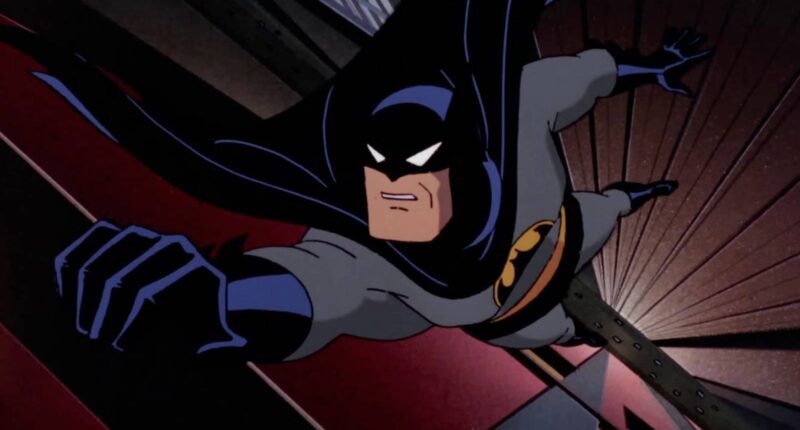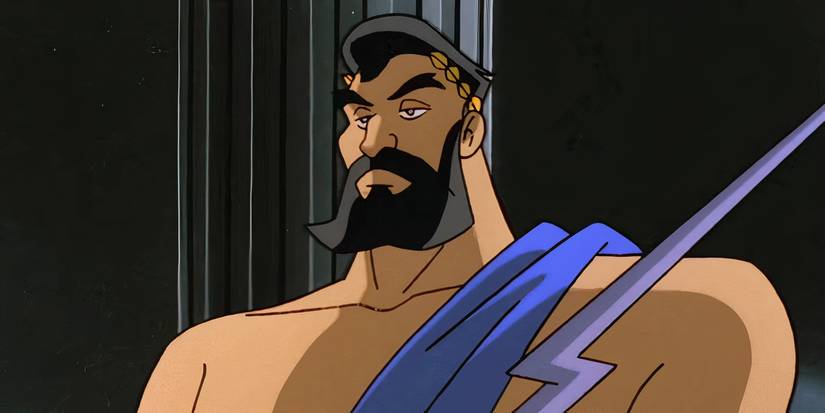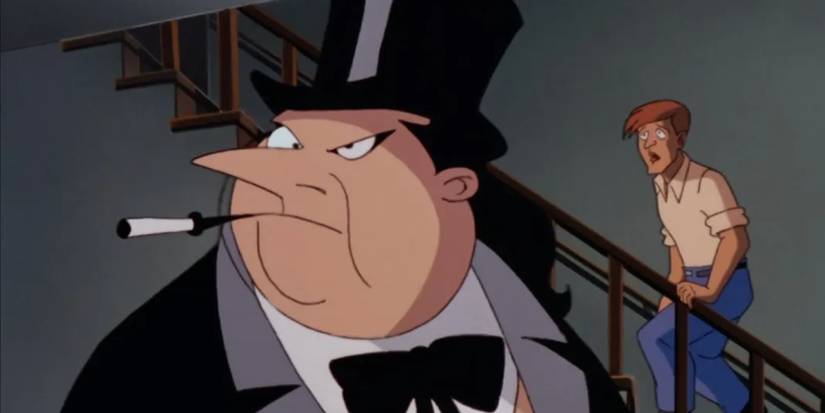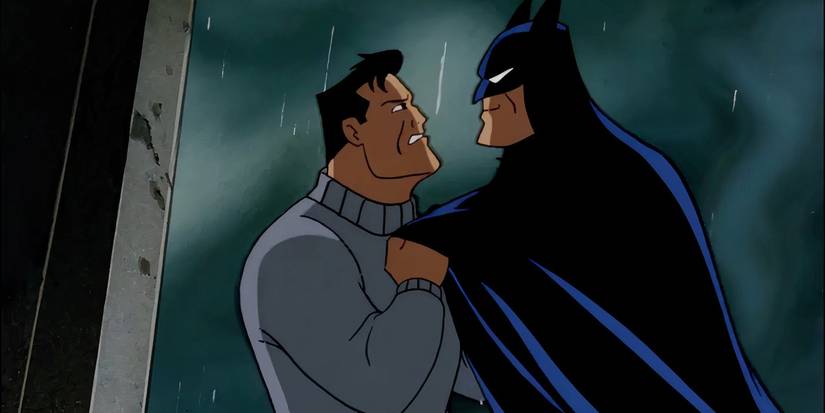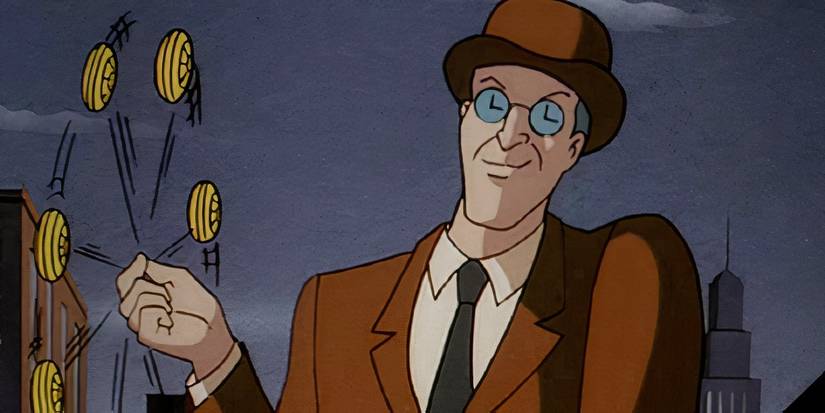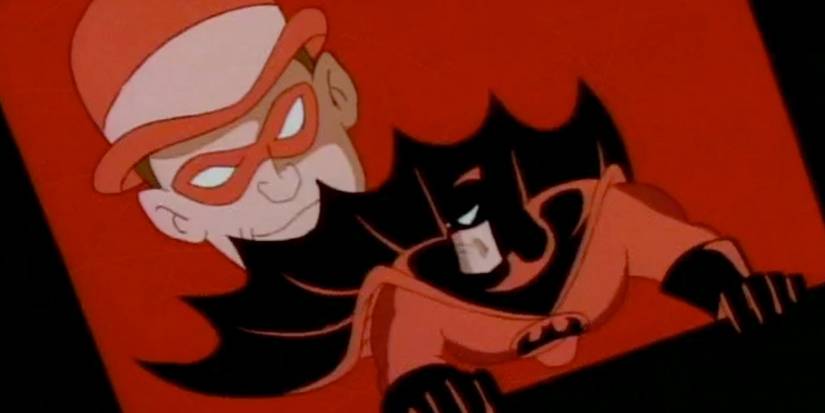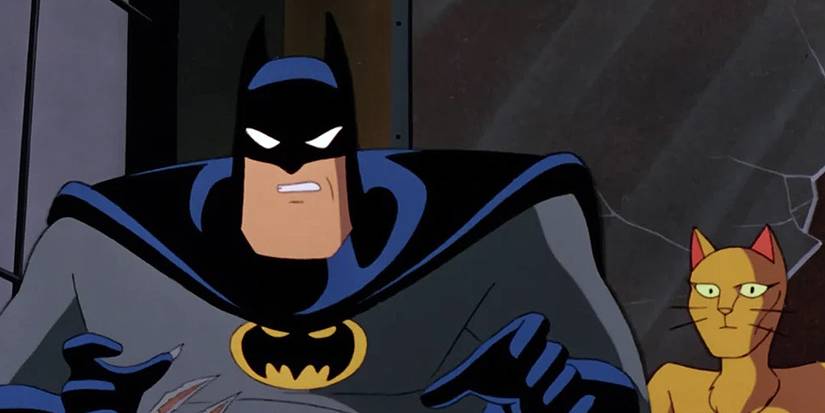Batman: The Animated Series delivered some of the greatest superhero stories in DC’s history, yet it also offered some of the very strangest. Batman: The Animated Series is famous for its noir style, mature storytelling, and definitive takes on iconic villains. Yet even within its grounded approach, the show occasionally ventured into bizarre or downright surreal territory.
These strange Batman: TAS detours weren’t mistakes. They showcased the creative team’s willingness to push boundaries and explore tones far outside what most viewers expected from a superhero cartoon in the early ’90s. Some are cult favorites; others remain divisive decades later. However, each one captures a moment when the series took a big, unpredictable swing.
“Fire From Olympus” (Season 1, Episode 63)
“Fire from Olympus” leans fully into mythological obsession as Maxie Zeus, normally a minor villain, becomes a delusional crime lord who believes he’s literally the king of the Greek gods. Batman: The Animated Series usually treats its villains with tragic nuance. However, here the show goes operatic.
It gives Maxie a floating sky‑fortress blimp, lightning cannons, and speeches lifted straight from ancient epics. The episode’s tone swings wildly between theatrical grandiosity and genuine tension. This is particularly evident when Maxie attempts to smite Gotham with a super‑charged energy weapon.
Even Batman seems thrown off by how unhinged his foe is. The climax, where Maxie rants about Olympus while being carted away to Arkham, is both unsettling and strangely poignant. It the episode as one of Batman: TAS’ most forgettable and surreal detours.
“I’ve Got Batman in My Basement” (Season 1, Episode 13)
One of the strangest early Batman: TAS misfires is “I’ve Got Batman in My Basement.” The episode feels much more like a kid‑centric ’80s adventure movie than the moody noir many associate with Batman: TAS. The premise alone is wild, managing to undermine the Dark Knight and one of his greatest foes in one go.
After being temporarily incapacitated by the Penguin, Batman is dragged into a suburban basement by two children who decide to protect the Caped Crusader from the Penguin’s men. The tone is oddly whimsical, climaxing with the children physically overpowering Penguin, turning his threat (and Batman’s crime fighting) into literal child’s play.
The kids even defend the house with improvised traps, predating Home Alone‑style sequences in superhero animation. Meanwhile, Penguin is portrayed as a full Saturday morning cartoon villain. While not widely beloved, the episode has developed a cult following precisely because of its tonal whiplash and bizarre storytelling choices.
“Baby-Doll” (Season 2, Episode 11)
“Baby‑Doll” is one of the most unsettling character studies in Batman: TAS, blending psychological horror with emotional tragedy. Mary Dahl is an adult actor trapped in the body of a child due to a rare condition. She spirals into madness and kidnaps her former sitcom cast in a desperate attempt to relive the only period when she felt loved.
The episode’s eeriness comes from the contrast between Mary’s childish voice and her deeply adult rage. It creates an original Batman: TAS villain unlike any other in the series. In the carnival house finale, Baby‑Doll confronts a giant distorted reflection of what she wishes she could be.
It is equal parts haunting and heartbreaking. It’s a deeply weird story. However, it’s also one of the show’s boldest explorations of identity, loneliness, and the psychological toll of fame.
“Perchance To Dream” (Season 1, Episode 30)
“Perchance to Dream” transforms Batman: TAS into a full psychological thriller. It presents a dream world where Bruce Wayne’s parents are alive, he’s engaged, and someone else patrols Gotham as Batman. The eerie perfection of the scenario gradually reveals itself as a terrifying trap created by the Mad Hatter.
The surreal atmosphere is filled with impossible logic gaps, jarring transitions, and subtle distortions. It pushes Batman: TAS into almost Lynchian territory. Watching Bruce struggle to understand why things feel “wrong” is deeply unsettling, and Kevin Conroy delivers one of his finest performances as he unravels emotionally.
The moment Bruce realizes he can’t read inside the dream remains one of the show’s most famous, cerebral twists. It’s a haunting, introspective, and existential episode. It stands among the series’ weirdest and most psychologically intense stories.
“Time Out Of Joint” (Season 2, Episode 8)
“Time Out of Joint” hurls Batman: TAS into full sci-fi territory with a story centered on time manipulation. When the Clock King gains access to experimental technology capable of freezing moments, the episode abandons noir aesthetics for trippy, physics-bending sequences. The result feels unlike anything else in the series.
Objects hang suspended in midair, explosions pause mid-blast, and characters move through scenes where time itself has fractured. Batman and Robin must chase a villain across irregular pockets of reality. These create visuals that border on surrealism.
While the Clock King is normally portrayed as a meticulous planner, here he becomes almost godlike. He literally weaponizes temporal distortion to assassinate the mayor. The episode’s strange energy, unusual pacing, and sci-fi premise make it one of the most unexpectedly weird installments in Batman: TAS’s run.
“What Is Reality?” (Season 1, Episode 48)
One of the most ambitious Riddler episodes in Batman: TAS is “What Is Reality?” The story dives headfirst into virtual-reality psychedelia years before the technology became mainstream. When Batman enters a digital labyrinth to rescue Commissioner Gordon, the episode unleashes a barrage of impossible landscapes.
It boasts shifting physics and abstract puzzles engineered by the Riddler’s warped genius. The art style departs radically from the show’s usual palette, adopting glowing grids, floating platforms, and dreamlike geometry. Even Batman struggles to keep up as the rules of the world rewrite themselves in real time.
The Riddler’s final trap is an MC Escher–inspired nightmare of infinite staircases. This remains one of Batman: TAS’s most visually inventive sequences. The episode’s blend of early cyberpunk aesthetics and psychological mind games makes it a standout oddity in Batman’s animated adventures.
“Dreams In Darkness” (Season 1, Episode 28)
In “Dreams in Darkness,” Batman grapples with hallucinations so intense that Arkham doctors believe he’s lost his mind. After exposure to Scarecrow’s fear toxin, he begins seeing nightmare visions. These include twisted reflections of his rogues and surreal distortions of Gotham itself. The episode unfolds like a psychological horror film.
Batman narrates the action from inside Arkham as he tries desperately to warn staff of an impending threat. The imagery is some of the series’ most disturbing, combining shadowy animation with unnerving sound design. It’s a rare episode where Batman appears genuinely vulnerable, emotionally and mentally.
The expressionist nightmare when Bruce relives his parents’ murder is particularly bizarre. The blurred line between reality and illusion, paired with Scarecrow’s sinister manipulation, creates a chilling atmosphere. “Dreams in Darkness” stands as one of the show’s strangest, and most unsettling, dives into Batman’s fractured psyche.
“Tyger, Tyger” (Season 1, Episode 42)
“Tyger, Tyger” ventures into full-on body-horror territory. It presents a Dr. Moreau–style story about forced evolution and genetic tampering. When Selina Kyle is kidnapped by the deranged scientist Dr. Emile Dorian, Batman uncovers an island populated by human-animal hybrids created through unethical experimentation.
The episode’s tone is wildly different from typical Batman: TAS crime stories. “Tyger, Tyger” embraces pulpy monster-movie tropes and unsettling visuals. Selina’s transformation into a feline hybrid is both tragic and disturbing.
Meanwhile, Dorian’s poetic obsession with Blake’s “The Tyger” adds a surreal literary layer. Even Batman seems out of place amid jungle terrain and chimera-like creatures. Though divisive, the episode’s melodramatic weirdness and striking creature designs make it one of the most unforgettable, and bizarre, entries in the series.
“House And Garden” (Season 2, Episode 5)
Poison Ivy takes center stage in Batman: TAS’s “House and Garden.” The episode starts much more like a domestic drama before plunging into botanical horror. Ivy appears reformed, living a peaceful suburban life with a husband and two young sons.
However, when monstrous plant creatures begin attacking criminals, Batman uncovers a terrifying secret. Ivy’s family is actually entirely artificial, grown from mutated plant matter and molded into a twisted fantasy of domestic bliss. The episode builds tension slowly, making its ultimate reveal all the more shocking.
The plant-creature designs are grotesque, with humanoid forms that blur the line between vegetation and flesh. Ivy’s yearning for a normal life (expressed through nightmarish creations) adds a tragic undertone that elevates the weirdness. It’s one of the show’s most haunting blends of emotion and body horror.
“His Silicon Soul” (Season 1, Episode 62)
“His Silicon Soul” is a philosophical and deeply eerie follow-up to Batman: TAS’s “Heart of Steel” arc. It explores identity, consciousness, and the uncanny valley through the return of Batman’s robotic duplicate. Believing itself to be the real Bruce Wayne, the replicant experiences emotional conflict, memories, and moral dilemmas.
It’s revealed that the replicant is being manipulated by the remnants of HARDAC. Yet the episode’s unsettling atmosphere comes from watching a mechanical imitation struggle with humanity more earnestly than some of Batman’s foes ever have. The final act depicts the duplicate confronting its own programming and its capacity for destruction.
It’s both tragic and unnervingly introspective. It offers a thrillingly strange blend of cyberpunk themes, existential dread, and poignant character moments. “His Silicon Soul” stands as one of the most quietly bizarre and thought-provoking stories in Batman: The Animated Series’ iconic run.

- Release Date
-
1992 – 1995-00-00
- Network
-
FOX, Fox Kids
- Showrunner
-
Bruce Timm
-

-

Efrem Zimbalist Jr.
Alfred Pennyworth (voice)
